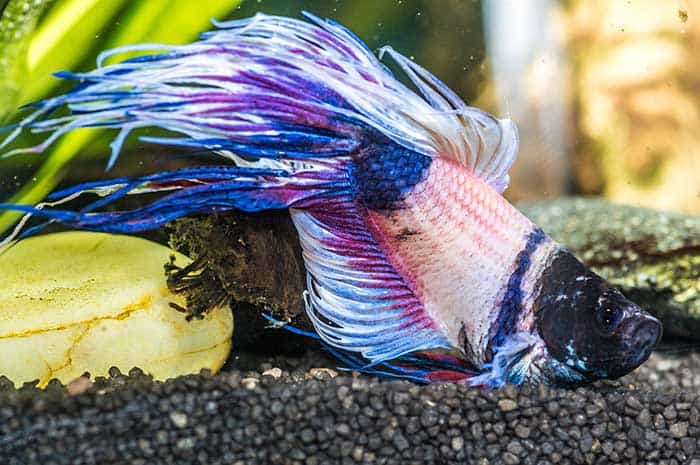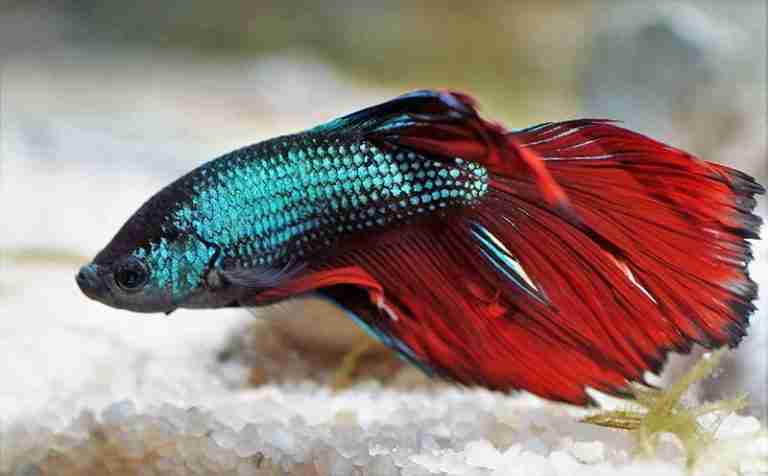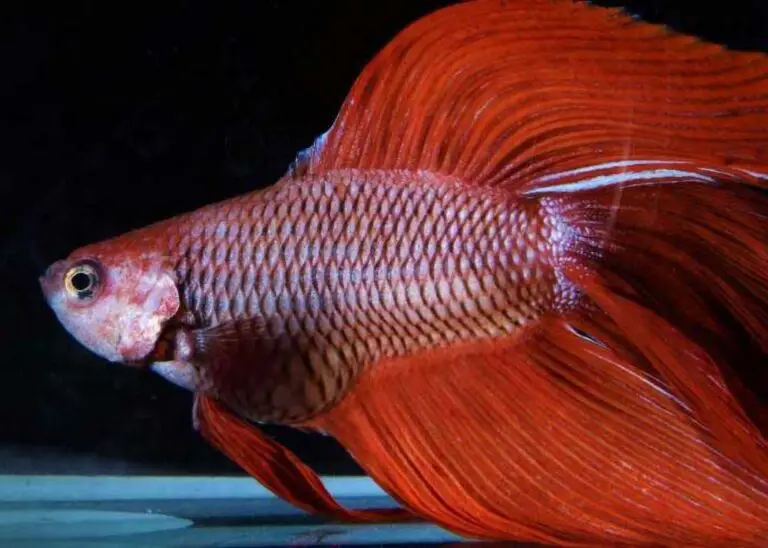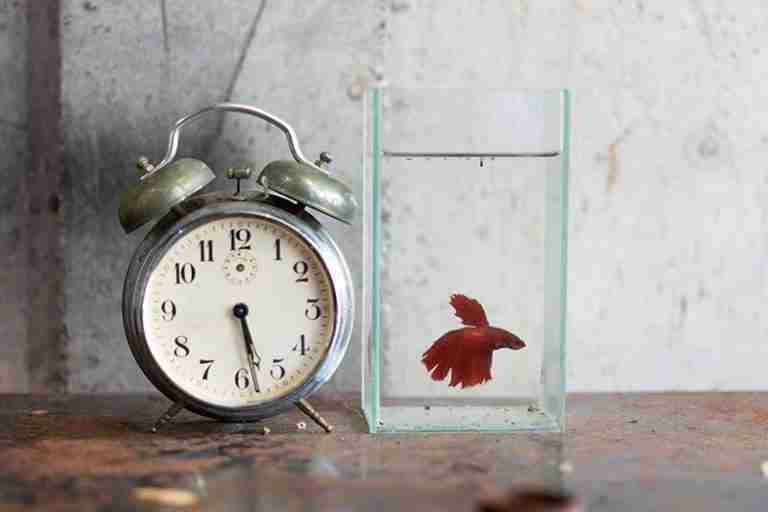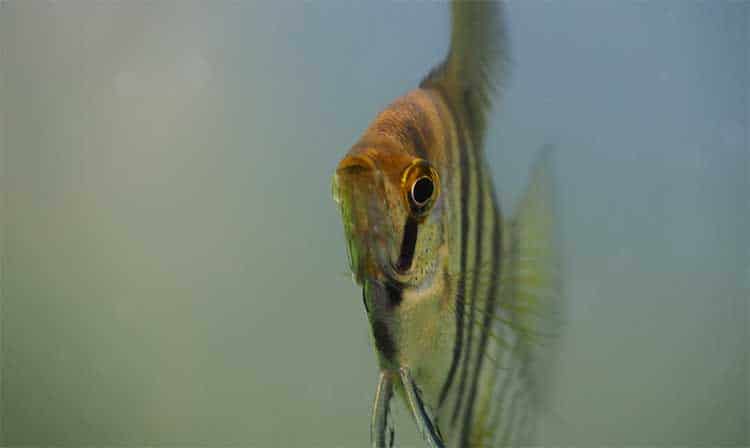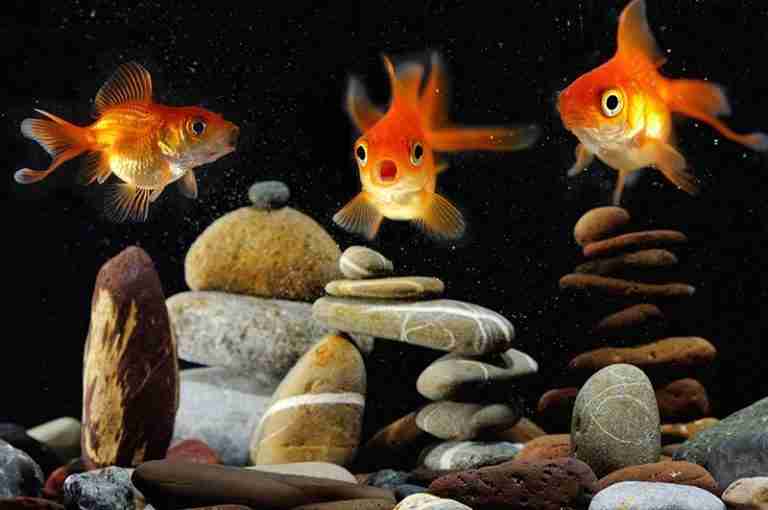How to Get Rid of Nematode Worms in an Aquarium
No matter what fish species you have, both saltwater fish and freshwater fish can all suffer from nematode worms. If you want to know how to get rid of Nematode worms in an aquarium, you are out of luck as they are nearly impossible to prevent (but they can be treated easily).
This guide introduces you to the nematode parasite. It explains what nematodes are, their lifecycle, and how to get rid of nematode worm infections in your fish.
If you have fish, the most common type of nematode is the Camallanus worm. These tiny parasitic worms can infect the gut of your fish and eat them from the inside out, causing all kinds of issues and eventually death if not treated correctly. Understanding how to get rid of nematode worms will prevent them from infecting your entire fish population and prevent healthy fish from dying prematurely.
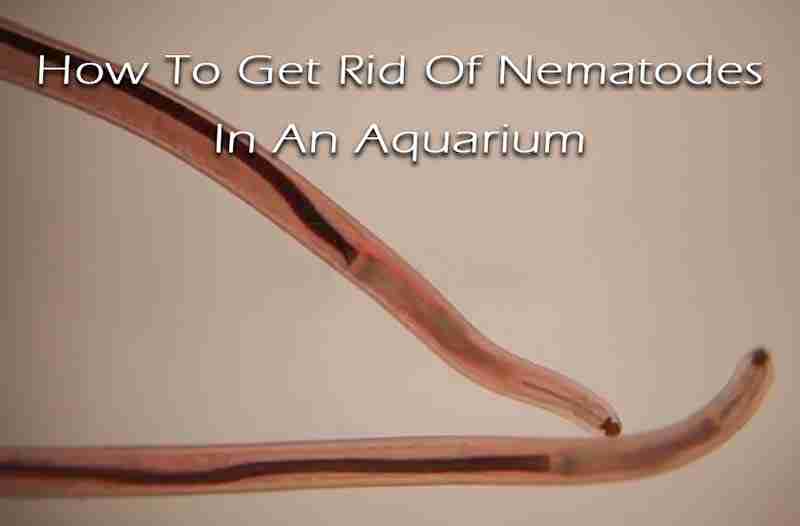
Nematodes (also known as roundworms) have a multi-stage lifecycle, and if any stage is interrupted, it will stop the parasite from developing. Cleaning your tank, intensive gravel cleaning, and a chemical treatment such as Fenbendazole are the most effective ways to get rid of these parasitic worms.
What Are Nematodes
Nematodes or Roundworms make up the Nematoda Phylum, of which there are many genus and species. Nematodes are present in many forms and can infect most animals, including humans.
Nematodes have evolved to inhabit most environments such as polar, tropical, freshwater, and saltwater and can therefore be found almost anywhere in the world.
I have already mentioned the Camallanus genus above as one of the most common nematodes that cause fish infections. Cappilaria worms are also commonly found in aquarium fish and have similar symptoms and treatments.
You can find both of these worms in most aquatic animals. Crayfish often get Cappilaria infections, but they affect almost all species of fish, snails, and shrimp. You can also find Nematodes in plants and soil. In fact, there is a growing concern among aquarists that nematodes might be the source of many unexplained plant deaths.
I will concentrate on two parasitic nematodes throughout this article, the Camallanus worm and the Cappilaria worm, as they are most prevalent in a home aquarium.
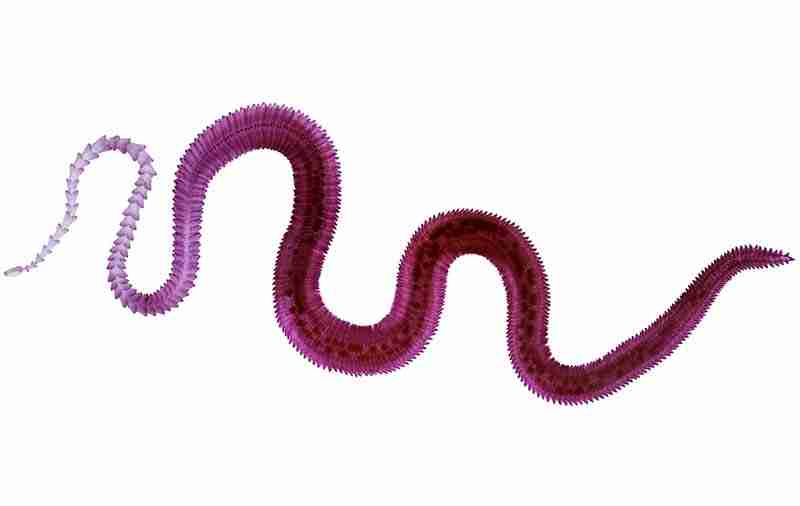
It is challenging to differentiate between the different types of nematode and will often require an expert eye and a microscope.
Concentrating on just two types of roundworms should give you a good understanding of why you may have an infestation, what problems a nematode infestation may cause, and the best treatments for nematodes in your fish tank.
Are Nematodes Harmful To Fish
Nematode parasites can be very harmful to fish once an infection gets out of control. There are many nematode species, and many of them can travel throughout a fish’s body, infecting the liver, kidneys, and other vital organs. Death usually occurs from secondary infections caused by the nematode feeding on these organs.
It is wise to monitor your fish’s behavior so that symptoms don’t go unnoticed.
What Are Camallanus Worms
Camallanus worms are a small parasitic worm species from the Camallanidae genus. There are many species of Camallanus worm commonly found in aquariums.
Camallanus worms are either white or reddish-brown in appearance and can be found in fish poop, hiding among plants, or hiding in various substrates. You may also notice them protruding from the anus of an infected fish.
When ingested, this roundworm will sit in the digestive tract, where they feed on digesting food. This in itself can cause your fish to become malnourished. There is also the risk of secondary infection as these worms feed on the inside of your fish, causing internal damage. A heavy infestation of nematodes will eat your fish from the inside out.
Life Cycle Of Camallanus Nematodes
Without becoming too scientific, the Camallanus worm’s life cycle is relatively straightforward compared to many nematodes, which is also why they are pretty common.
The Camallanus lifecycle happens in three stages:
- The free-swimming, free-living stage.
- The Molting Stage where infection of an intermediate host occurs.
- Another molting stage, which occurs in the host fish.
During the free-swimming phase, they look like tiny white worms, very similar to threadworms, and are very difficult to see without the use of a microscope.
Often described as reddish-brown worms, this color is taken from the blood and proteins it is feeding upon. While in the host fish, these worms will feed upon digesting food matter and the live tissue of the host fish. Eggs are laid in the host fish’s digestive tract and will emerge through feces, where the life cycle will start over.
Once hatched, these parasites will infect an intermediate host (usually a food source of its final host fish such as tubifex worms, bloodworms, or Gammarus shrimp) and be ingested at the final stage by the main host fish.
How To Get Rid Of Camallanus Worms
By interrupting any stage of the Camallanus worm’s life cycle, the Camallanus worm will die, and reinfection will cease. Understanding this life cycle is the first step in successfully treating an outbreak.
What Are Cappilaria Worms
Cappilaria is another genus of nematode worms that infects just about any species of fish you keep in your tank, including tropical, coldwater, and marine fish. Cappilaria worms are also parasitic roundworms that feed upon your fish’s insides. Cappilaria worms will infect a wide variety of animals ranging from frogs to birds, so each animal species has a unique species of Cappilaria worm.
There are many species of Cappilaria nematode which makes it difficult to identify them down to specific levels such as genus or even species level. Their red-brown color can identify Cappilaria, and they are commonly found in the digestive tract of fish.
Cappilaria worms are not to be confused with the Camallanus nematode, which is significantly smaller. Unlike the Camallanus nematode, Cappilaria worms rarely come out of the fish’s anus.
Although both are widespread, the Cappilaria nematode is considered the most typical species discovered in aquariums at home.
Life Cycle Of Cappilaria Nematodes
The life cycle of Cappilaria worms is even more straightforward than that of the Camallanus worm. This parasite does not have a free-living stage and instead starts its life cycle within the host fish or an intermediate host, where it lays its eggs. These eggs will hatch inside of the host fish and continue their life cycle.
Cappilaria worm larvae will get to the belly of their new host fish if a predator eats the host. If this parasite kills its host, the carcass will usually be consumed by a scavenger, becoming the new host.
As ingestion is the usual cause of infection, the best way to break the life cycle is to remove dead fish immediately, along with any live food which the parasite may have infected.
How Do Nematodes Get In An Aquarium
There are many ways to introduce nematodes into your aquarium, such as introducing new fish, plants, or substrates that are infected. These worms are so tiny that they can easily evade detection.
The free-living variety can easily attach to live plants or burrow into the sand, soil, and gravel substrates. Nematode parasites can often be introduced through freshly infected, healthy-looking fish, as symptoms won’t show immediately.
Nematodes can reside in a healthy aquarium for a long time without causing any damage. Conditions within a healthy aquarium are sufficient to survive but not quite enough to thrive.
Nematodes will thrive in less healthy, oxygen-deprived environments, and tanks with cloudy water may indicate excess food waste, causing a rise in ammonia levels and a drop in oxygen levels. These conditions can lead to a population explosion of nematodes, where your problems usually begin.
Signs Of Nematode Infection In Fish
Camallanus worm symptoms are slightly different from Cappilaria worm symptoms as they can often be identified when protruding from the fish’s anus. Although not impossible, Cappilaria worms will not usually be seen protruding from the anus.
Eggs of the Cappilaria worm are often found within the body of dead fish. When eaten by scavengers such as bottom feeders, shrimps, or crabs, the infection gets passed from species to species, where the Cappilaria life cycle will continue.
Common symptoms of nematode infection are:
- Loss of appetite/wasting away.
- Bloating caused by the nematodes colonizing the fish’s gut.
- An empty or sinking stomach on a well-fed fish.
- Protruding Camallanus worms from the anus.
- White Feces.
- Swimming in odd patterns.
- Swim bladder problems cause sideways or upsidedown swimming.
- Rubbing against objects.
- Lethargy – Sitting still or swimming in place.
- Sudden and unusual deaths within your aquarium.
Many of the symptoms above can also indicate other illnesses, so if nematodes are suspected, you will need to try and obtain some physical evidence by checking for these worms or eggs with a powerful magnifying glass.
If you have a compelling reason why you suspect a nematode infection but have no evidence, you can treat the suspected infection without causing harm to your fish. However, a misdiagnosis may cause more damage if your fish is suffering from a different illness altogether.
If you have a fish death, it would be wise to perform a necropsy by cutting open your fish and searching for Cappilaria worms or their eggs.
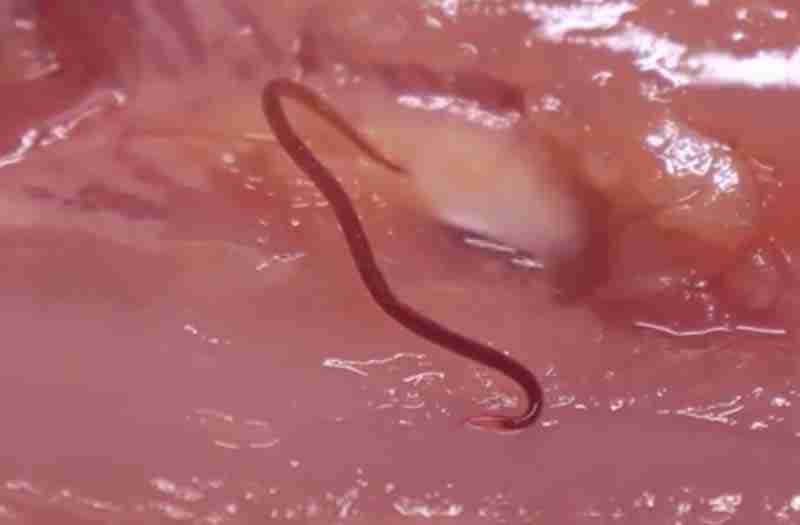
How To Get Rid Of Nematode Worms In An Aquarium
After successfully diagnosing a Nematode parasitic infection, worm removal begins. Often the first step would be to use a quarantine tank to home any infected fish, although symptoms usually only show after the infection has progressed, so it would be better to treat your entire fish tank and its population.
How To Treat Nematodes In An Aquarium
Treatment usually consists of an internal and external chemical treatment using medicated food to treat the internal parasites. Chemicals such as Fenbendazole or Methylene Blue generally treat many types of roundworm and parasitic infections effectively.
You should always check with a veterinarian or at least with your local fish store before purchasing and using any medications.
Once treatment of your fish has begun, you will need to perform some extensive aquarium maintenance.
- Thoroughly clean the substrate with a gravel vacuum to remove as much uneaten food waste and fish waste as possible. You will also be looking to remove eggs or hiding worms buried in the substrate. It would be best if you repeated this several times.
- You may have these parasites or their larvae attached to plants or ornaments, so it would be wise to remove and clean each of these thoroughly. Hydrogen peroxide is commonly used as a dip for ornaments/decorations and can be used for live plants if rinsed thoroughly afterward.
- Clean your filter housing and sponges to remove hiding parasites. The filter is a prominent part of your aquarium system and is the ideal hiding place for many parasites and bacteria which can quickly travel through the water column.
- Thoroughly clean the glass inside your tank, as the tiny parasitic worms or their larvae will easily attach to this type of surface.
- Check water parameters and perform a generous water change to bring them back into line.
- Feed your fish less over the treatment phase to avoid food waste build-up and to help starve these parasitic worms.
It will take a few days or even weeks to completely rid your tank of nematodes, and more serious infections can take even longer with many repeated tank cleans required.
If your fish have acquired a severe roundworm infection, it may already be too late as these worms infect many areas and can cause damage to the liver, kidneys, and other organs within the fish.
Wrap Up
The Cappilaria worm is a common type of parasite, so if you suspect Cappilaria worms in your aquarium, it will be essential to follow the steps outlined above. This article has only scratched the surface of what nematode worms are and how they can affect an aquarium environment.
If you have experienced these parasites before or have any questions about Cappilaria worms, Camallanus Worms, or other types of parasitic infections, you can read our other articles in the Fish Health section of this website.


